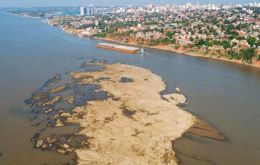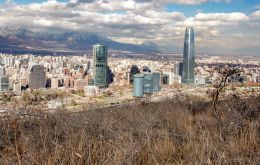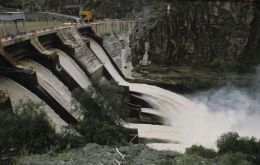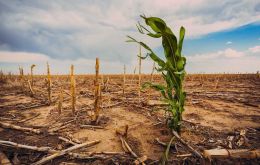MercoPress. South Atlantic News Agency
Tag: drought
-
Friday, March 18th 2022 - 09:58 UTC
Chilean drought: Santiago faces water rationing in second half of 2022

Chilean president Gabriel Boric has called on Metropolitan Santiago residents to make rational use of drinking water, since the situation is extremely serious, following several years of drought and or insufficient rainfall.
-
Monday, February 21st 2022 - 09:58 UTC
Paraguay could be forced to import soybeans because drought has halved production

The South American drought that has extended to several Argentine provinces and Brazilian states has also hit hard Paraguay, the world's fourth exporter of soybeans. In effect, crops are suffering and the processing industry is running out of supplies.
-
Thursday, January 13th 2022 - 09:36 UTC
Paraguay lowers expectations on soy due to drought

Paraguay's Agriculture Ministry has announced between 6 and 7 million tons of soybeans were to be harvested this season against the original projections of 10 million due to the unprecedented weather conditions.
-
Monday, January 10th 2022 - 09:19 UTC
Lack of rain in southern states will reduce the Brazilian 2021/22 soybean harvest

The hydric deficit and above-average temperatures in southern Brazil and southern Mato Grosso do Sul, prevailing since November have significantly damaged the 2021/22 soybean crop. Brazil’s estimated harvest has been lowered by 11.3 million tons to 133.4 million tons, according to a new survey released this week by AgRural.
-
Saturday, September 18th 2021 - 08:58 UTC
Paraguay River reported to be close to historic downspout levels

Paraguayan authorities have reported the Paraguay River is merely 9 centimeters from its all-time low as it dropped yet another 3 centimeters Friday in Asunción.
-
Tuesday, August 31st 2021 - 08:58 UTC
Piñera's “Ten Pillars” to save water in drought stricken Chile

Chile presented on Monday a “Plan to combat Drought” to increase the provision of water and improve its efficient use thus ensuring the supply for human consumption and the production of food.
-
Friday, August 6th 2021 - 07:19 UTC
Chile: Shortage of water reported in Santiago Metropolitan Region

Chile's Minister of Public Works Alfredo Moreno Thursday admitted Santiago's Metropolitan Region was going through “the worst drought in history,” which has prompted “exceptional measures.”
-
Thursday, June 24th 2021 - 07:50 UTC
Paraguay passes emergency bill as downspouts hinder river navigation

Paraguay's Lower House Wednesday passed an emergency bill on river navigation and authorized dredging works at the Paraguay, Paraná and Apa rivers as downspouts prevent normal navigation. The document now goes to the Executive Branch for consideration.
-
Saturday, May 29th 2021 - 08:41 UTC
Brazil threatened by shortages in electricity supply due to water emergency

Brazil's Electric Sector Monitoring Committee Thursday issued a “water risk” warning and the Federal Government undertook a series of measures to avoid energy rationing until October, a period of low rainfall and more severe drought in the southeast and midwest, it was announced.
-
Tuesday, January 5th 2021 - 09:36 UTC
Dry weather threatens southern Brazil and eastern Argentina

Dry weather across some of the major producing regions in South America is putting upward pressure on corn and soybean prices at the start the new year. Dryness is expected to continue through the short term across southern Brazil and especially in the main-producing states in Argentina.
